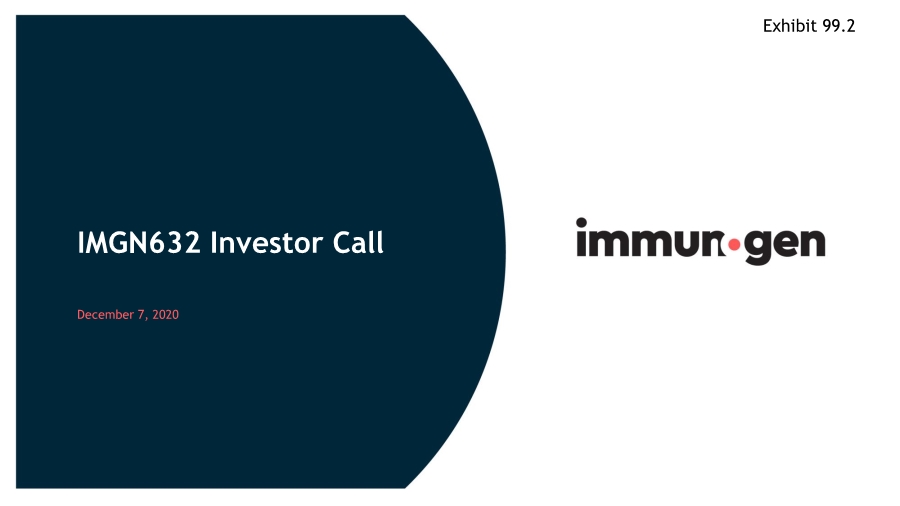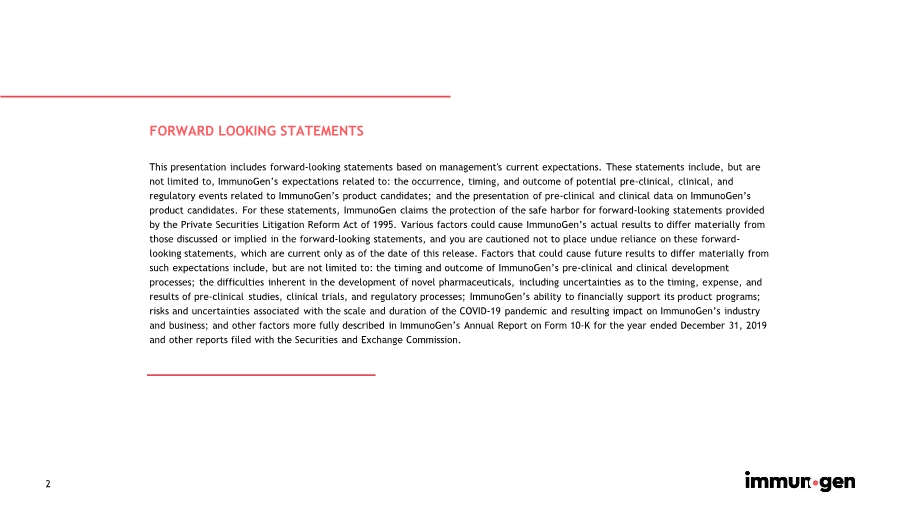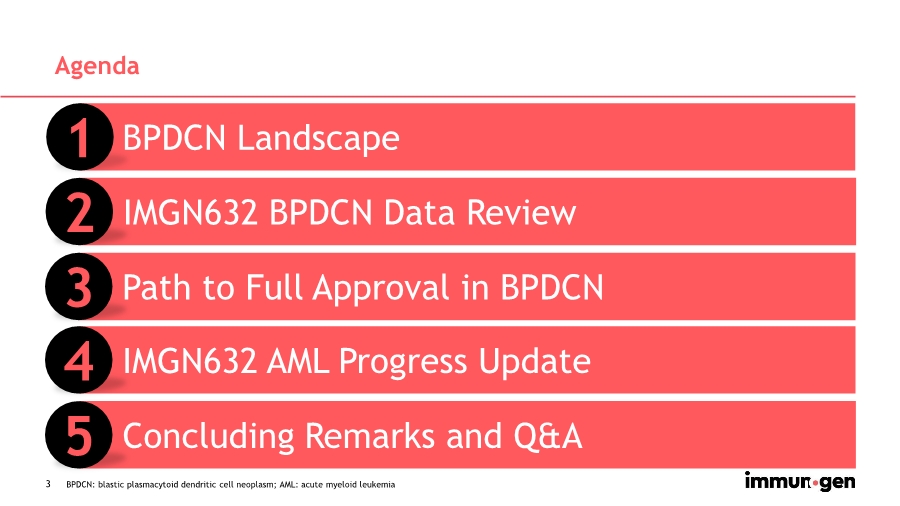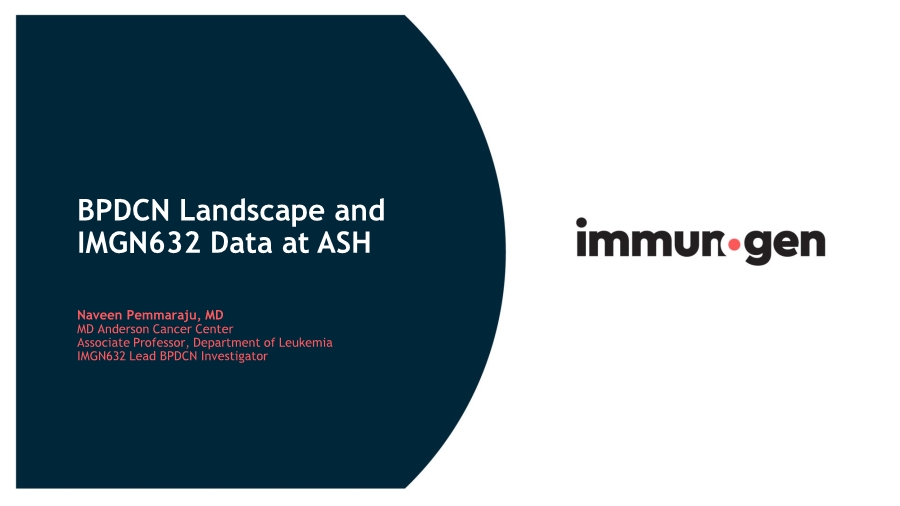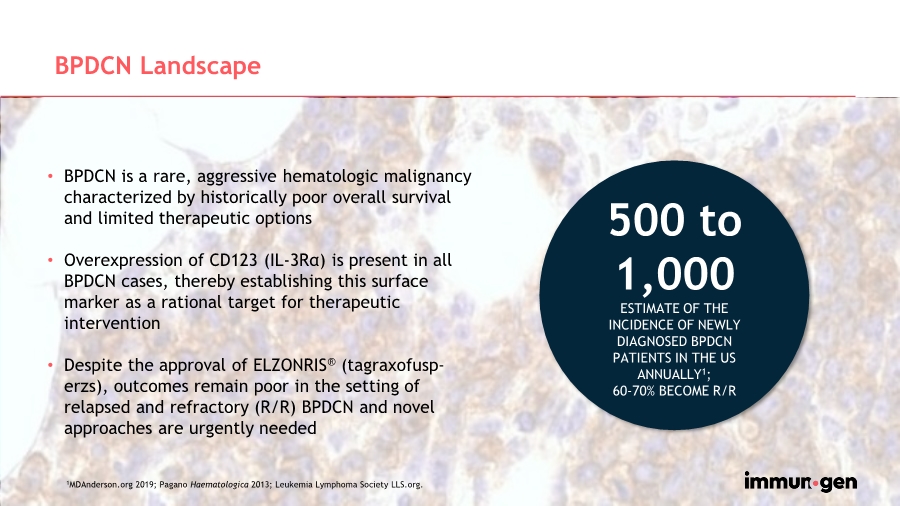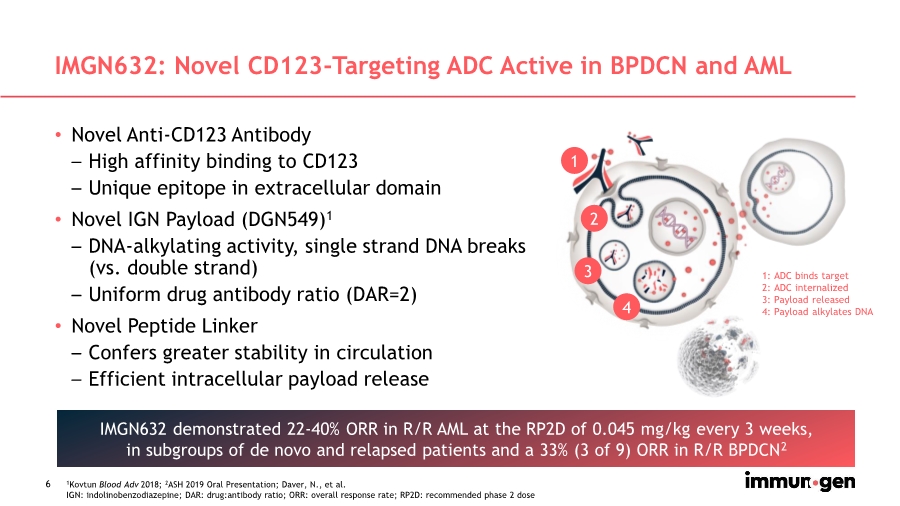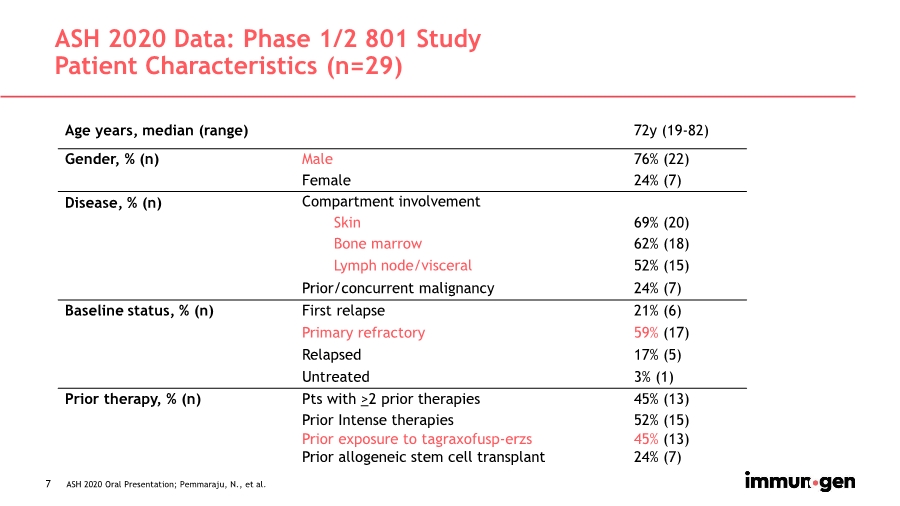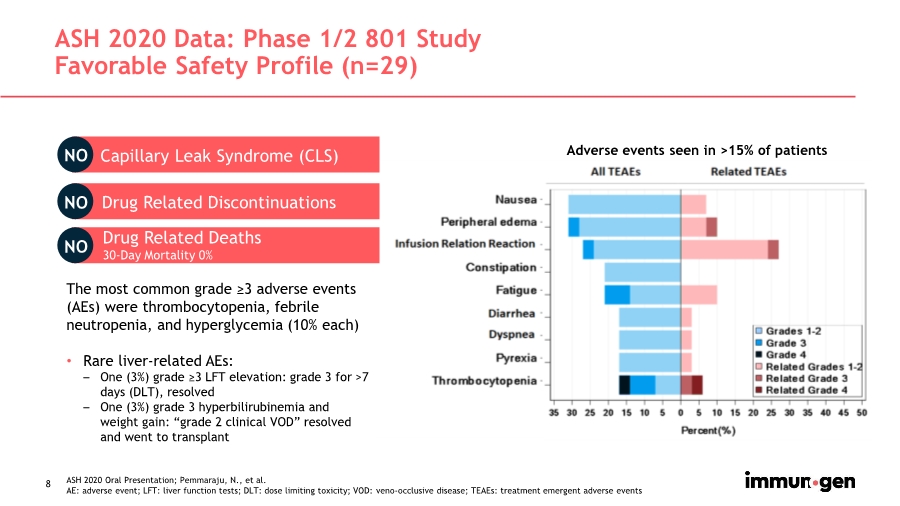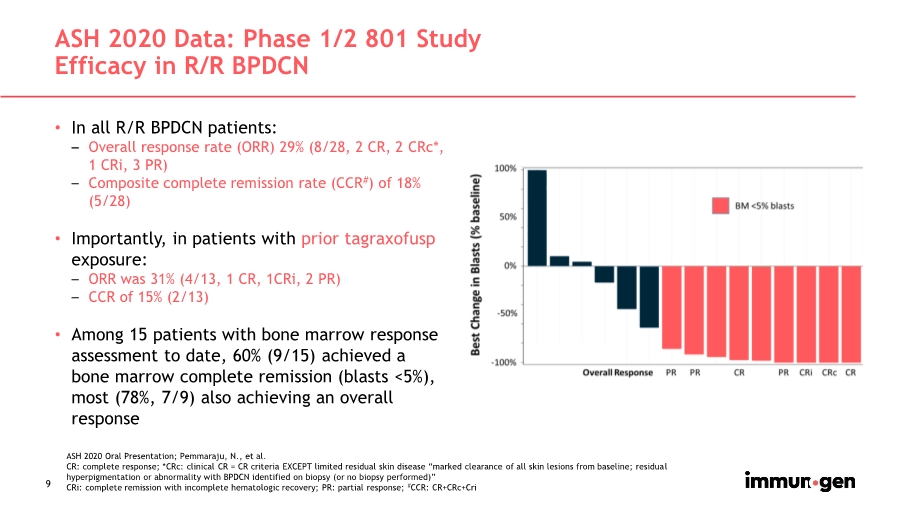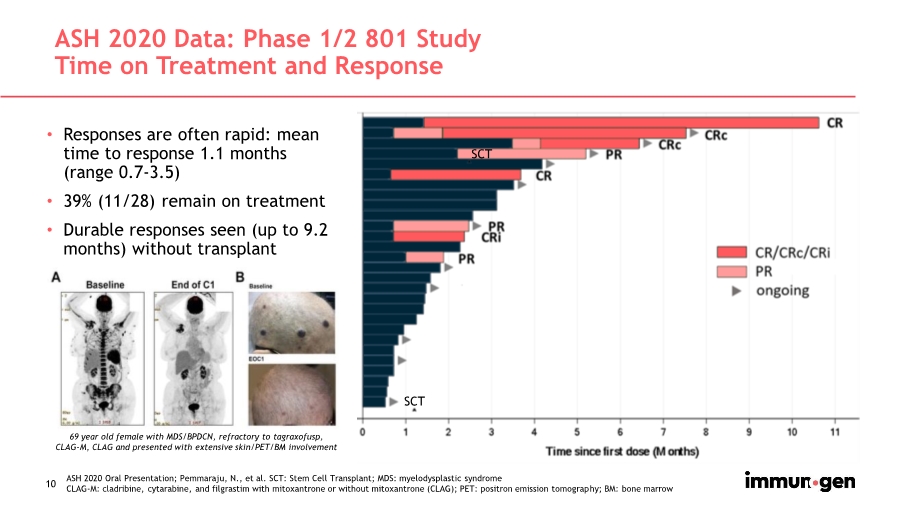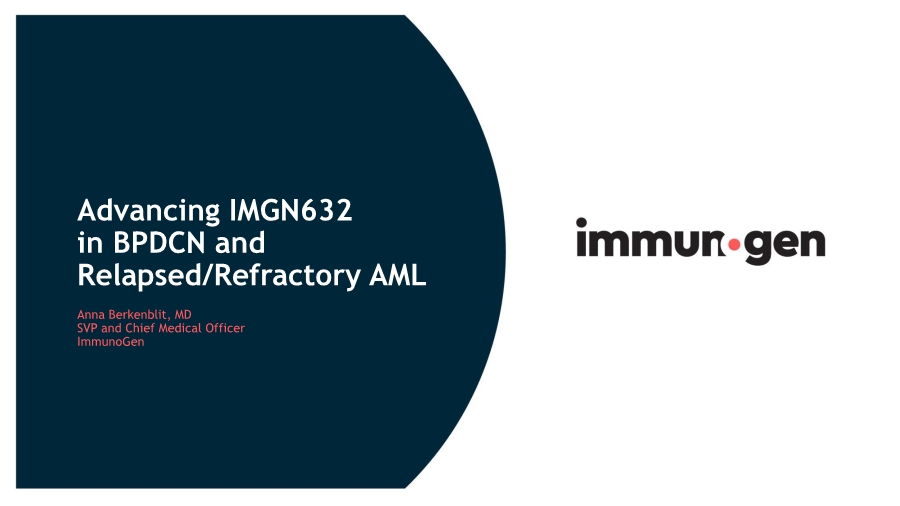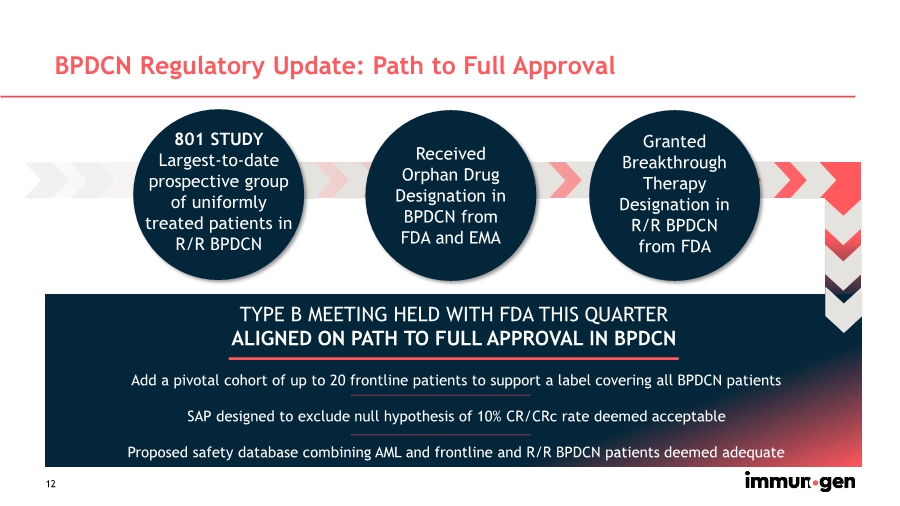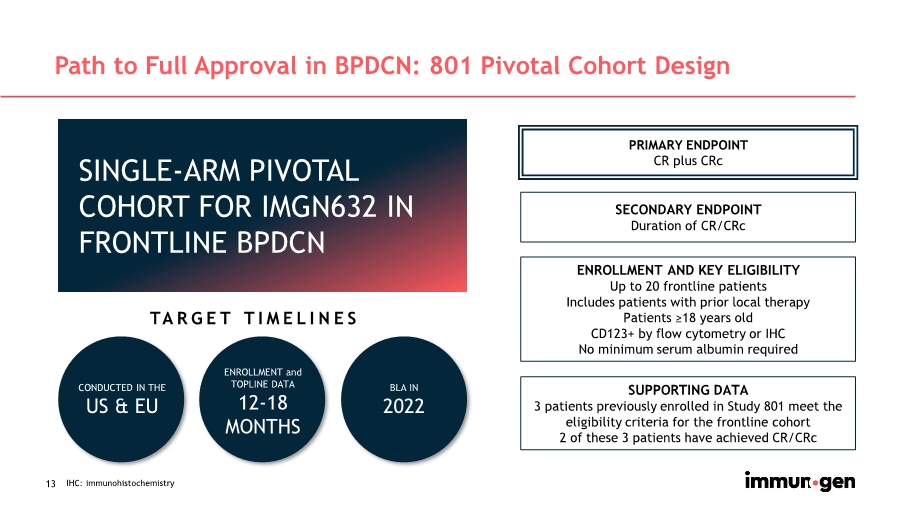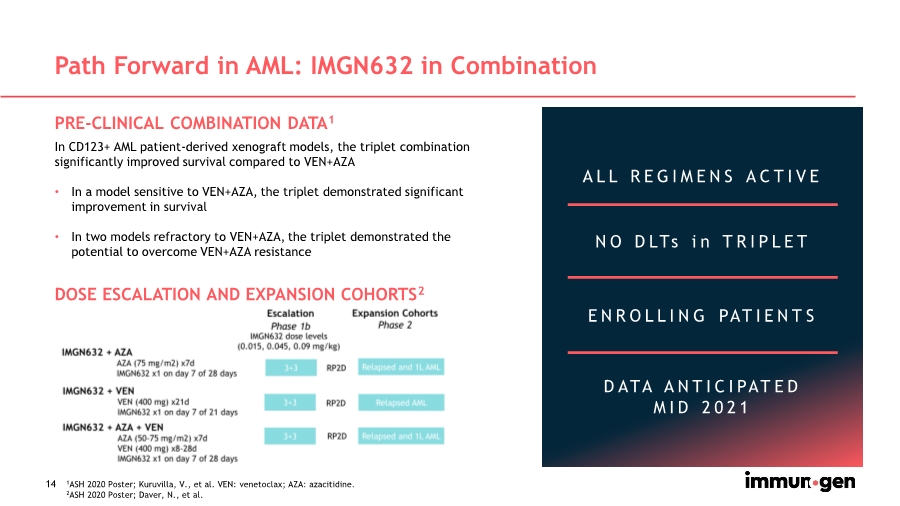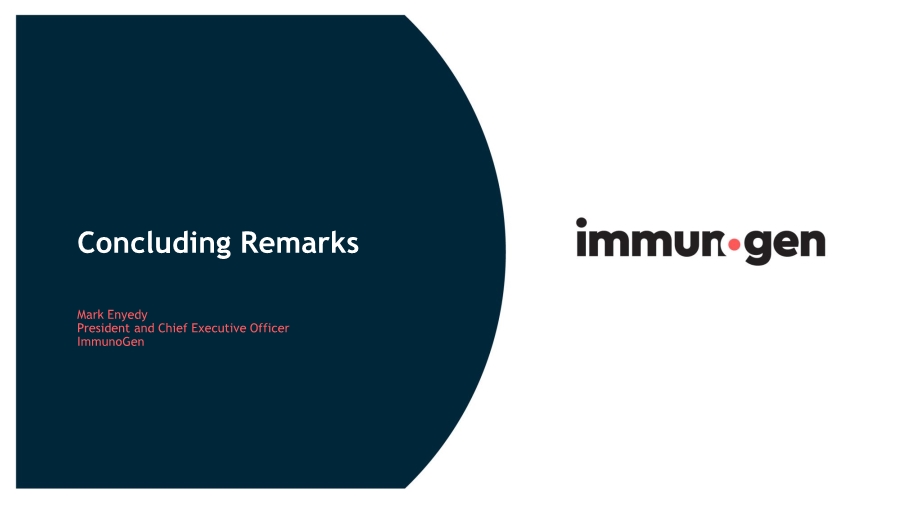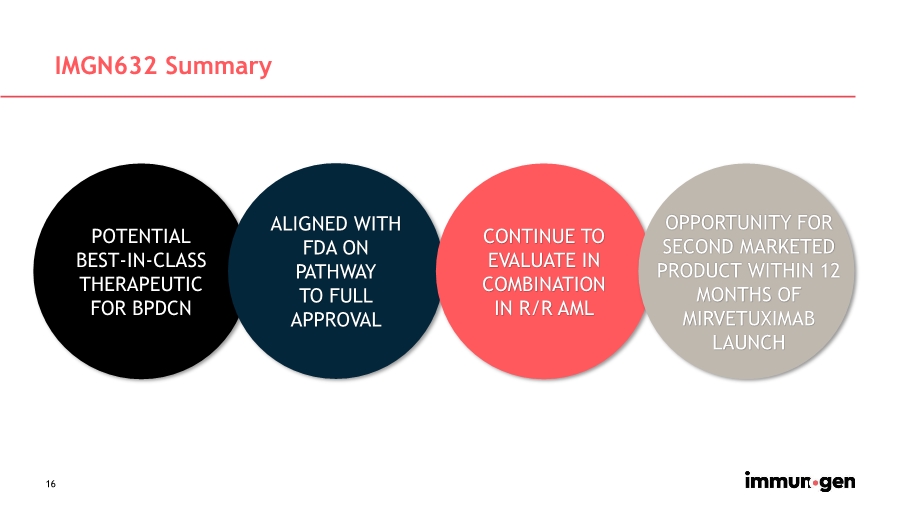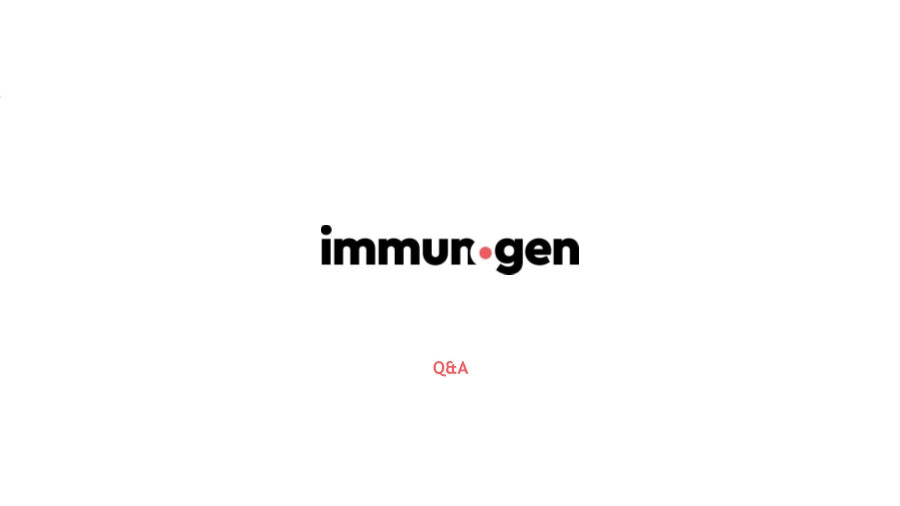Free signup for more
- Track your favorite companies
- Receive email alerts for new filings
- Personalized dashboard of news and more
- Access all data and search results
Filing tables
Filing exhibits
IMGN similar filings
- 18 Dec 20 Entry into a Material Definitive Agreement
- 18 Dec 20 Other Events
- 11 Dec 20 Other Events
- 7 Dec 20 ImmunoGen Presents Updated Findings from Phase 1/2 Study of IMGN632 in Blastic Plasmacytoid Dendritic Cell Neoplasm at ASH Annual Meeting
- 6 Nov 20 ImmunoGen Reports Recent Progress and Third Quarter 2020 Financial Results
- 26 Oct 20 Departure of Directors or Certain Officers
- 19 Oct 20 ImmunoGen and Huadong Medicine Announce Strategic Collaboration to Develop and Commercialize Mirvetuximab Soravtansine in Greater China
Filing view
External links
